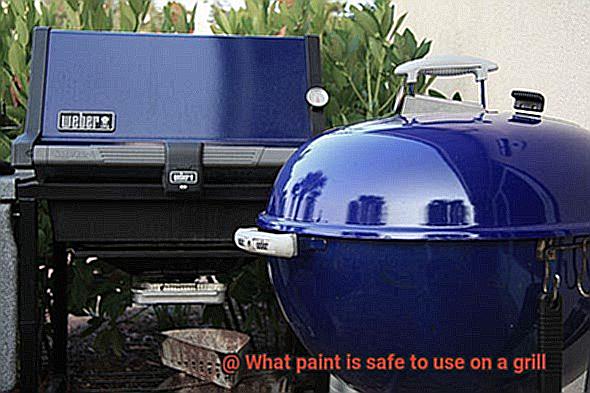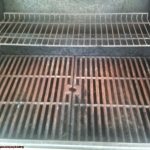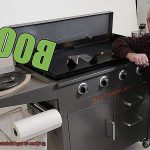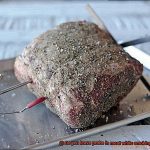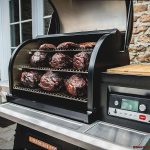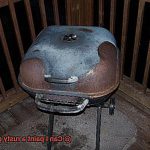Summertime means grilling time. There’s nothing like the sizzle of your favorite food cooking on the grill while you soak up the sun. However, after a few uses, your grill may start to show signs of wear and tear. That’s where painting your grill comes in handy. But before you whip out that can of paint, it’s important to know what type of paint is safe for grills.
So, what paint is safe to use on a grill? In this blog post, we’ll dive into the world of high-heat paints and ceramic coatings to find out which ones are safe for food contact. We’ll break down the benefits, drawbacks, and applications of each option so you can make an informed decision.
But let’s take a step back for a moment. Why does using safe paint matter? Well, if you use an unsafe paint on your grill, it could potentially introduce harmful chemicals into your food – not exactly appetizing. That’s why using a food-safe and heat-resistant paint is crucial.
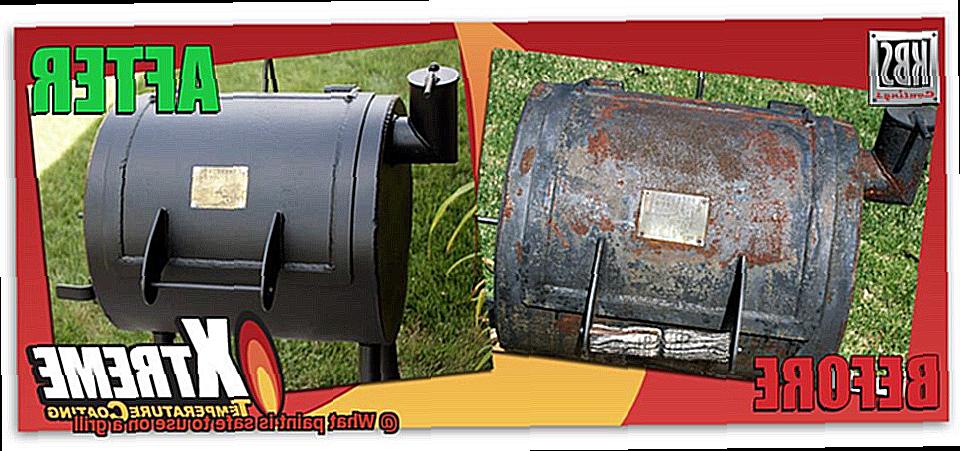
Now that we’ve established why using safe paint matters let’s get into the nitty-gritty details. Are you ready to learn how to choose the perfect paint for your grill? Let’s fire up those grills and get started.
Contents
What Paint is Safe to Use on a Grill?
While the idea of a new look for your grill is exciting, it’s important to prioritize safety first. Using the wrong type of paint can ruin the aesthetics of your grill and pose health risks when heated during cooking. So, what paint is safe to use on a grill?
High-temperature paint, also known as heat-resistant paint, is one of the safest options for painting a grill. This type of paint can endure temperatures up to a scorching 1200 degrees Fahrenheit, making it perfect for grilling and smoking. High-temperature paint is typically formulated with silicone resin that can resist chipping, peeling, and fading, ensuring long-lasting protection for your grill.
Another safe choice is ceramic-based paint, which boasts impressive heat resistance and durability. Ceramic-based paint can withstand temperatures up to 2000 degrees Fahrenheit and gives your grill a smooth and shiny finish that’s sure to impress. However, it’s worth noting that this type of paint may come at a higher price point than high-temperature paint and may require multiple coats.
It’s crucial to avoid using regular spray paints or any paint containing lead, zinc, or other harmful chemicals on your grill. These types of paints can release toxic fumes when heated and contaminate your food, leading to significant health hazards. Additionally, some types of paints are not suitable for certain parts of the grill, such as the cooking grates or burners.
High-Temperature Spray Paint
When it comes to giving your grill a facelift, high-temperature spray paint is the way to go. Not only is it tailor-made to withstand scorching temperatures of up to 600 degrees Fahrenheit, but it also offers a host of other benefits that make it a fan favorite among grill enthusiasts.
One of the key benefits of high-temperature spray paint is its ability to resist flaking and chipping. This is particularly important for grills that are frequently used or exposed to harsh weather conditions. With a robust coating that protects against rust and damage, your grill will look great for years to come.
When selecting a high-temperature spray paint for your grill, opt for products specifically formulated for metal surfaces. Look out for labels such as “heat-resistant” or “high-temperature” with temperature ranges that match those of your grill. This ensures that the paint can withstand the heat and provide maximum protection.
To ensure optimal results, proper preparation of the surface is crucial. Thoroughly clean the grill, remove any rust or old paint, and sand the surface to create an even texture before applying the high-temperature spray paint. By following the manufacturer’s instructions, you can guarantee that the paint will adhere properly and provide optimal protection.
Ceramic-Based Paint
Look no further than ceramic-based paint.
One of the major advantages of ceramic-based paint is its ability to withstand extreme heat without breaking down or flaking off. Whether you’re cooking on high flames or doing some slow and low BBQ, your grill’s surface will remain protected and looking great.
But it’s not just about heat resistance. Ceramic-based paint is also non-toxic and safe for use around food. This means that you won’t have to worry about harmful chemicals leaching into your meals while grilling up a storm.
And the durability of ceramic-based paint is unmatched. With regular use and exposure to the elements, it can last for several years without chipping or fading. And since it requires minimal maintenance, it’s a cost-effective solution for those who want a long-lasting finish on their grill.
Health Risks of Certain Paints
Grilling is a beloved pastime for many, but it’s important to prioritize safety when enjoying this outdoor activity. One factor that is often overlooked is the type of paint used on your grill. Did you know that certain paints can pose serious health risks if they come into contact with food or are exposed to high temperatures? Here are the key points to consider when it comes to the health risks of certain paints on grills.
Firstly, high-temperature paint is a common choice for grill owners, as it’s specifically designed for use on grills and can withstand high temperatures. However, it’s crucial to note that this type of paint may contain harmful chemicals such as lead or cadmium. These chemicals can easily seep into your food and cause serious health problems if ingested. Choosing the right type of paint for your grill is essential to avoid such risks.
Another type of paint to steer clear of when it comes to grills is standard spray paint. This type of paint is not intended for high temperatures and can release toxic fumes when heated. Breathing in these fumes can cause respiratory issues and other health concerns. It’s important to be aware of these risks and avoid using standard spray paint on your grill.
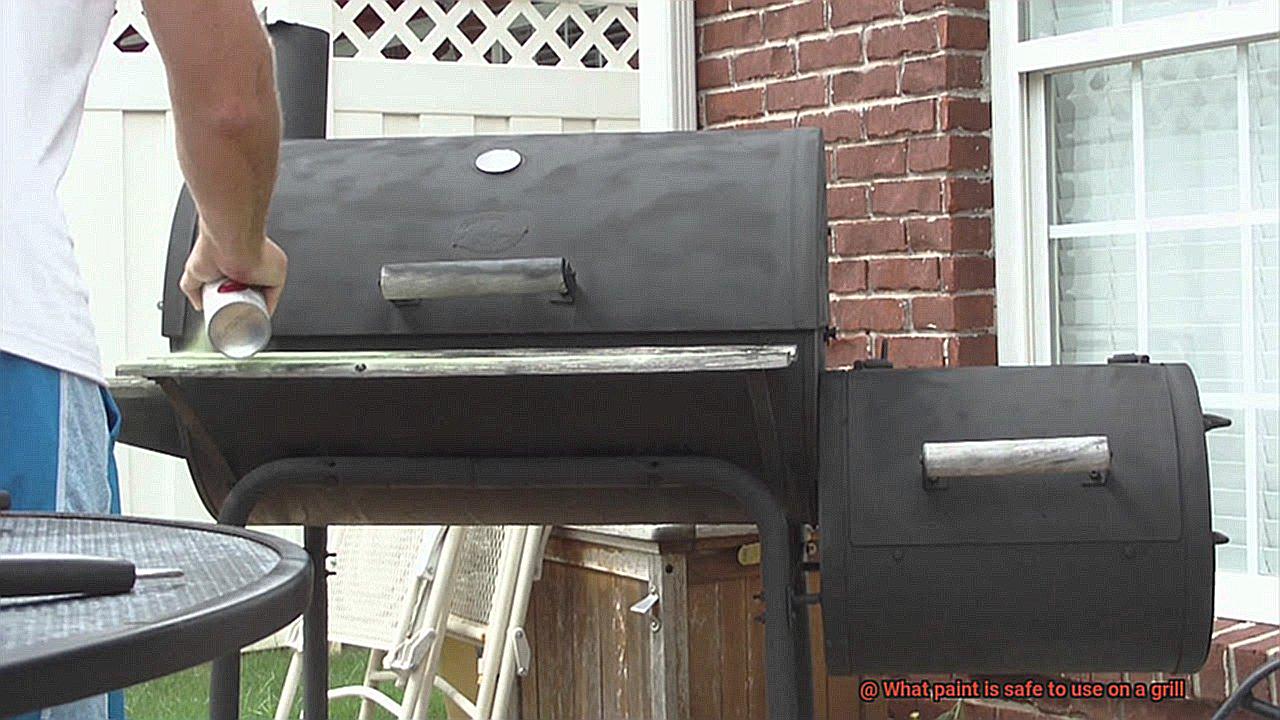
Even if a paint is labeled as “food-safe,” it may still not be suitable for use on a grill. The high temperatures involved in grilling can cause the paint to break down and release harmful chemicals into your food or the air. Therefore, choosing a high-temperature paint specifically formulated for use on grills is the best way to ensure that your food stays safe and free from harmful chemicals.
Finding Food-Safe and Non-Toxic Paints
As an expert in finding food-safe and non-toxic paints for grills, I’m here to guide you through the options available and why it’s crucial to use the right type of paint.
Firstly, it’s essential to consider the harmful chemicals that certain types of paint can contain. Traditional spray paints or enamel-based paints are a definite no-go when it comes to grills. These paints can release toxic fumes when heated, which can seep into your food and pose serious health risks. So, what options are safe?
Ceramic-based paint is one of the most common types of food-safe paint for grills. This paint is formulated with high-temperature ceramic particles that can withstand grilling heat levels without flaking or chipping. Furthermore, these paints are non-toxic, making them a safe option for use on grills. They come in a variety of colors and finishes, allowing you to find the perfect match for your grill.
Another great option for food-safe grill paint is silicone-based paint. This type of paint is formulated with a silicone resin that creates a durable, heat-resistant coating on the grill’s surface. Silicone-based paints are also non-toxic and safe for use on grills. They come in various colors and finishes, allowing you to customize the look of your grill.
It’s important to note that using the right type of paint not only ensures your food stays safe from harmful chemicals but also helps maintain the longevity and appearance of your grill. That’s why choosing food-safe and non-toxic paints specifically designed for use on grills is essential.
Tips for Applying the Right Paint to Your Grill
Before you start, it’s important to know how to choose and apply the right paint for a safe and long-lasting finish. Here are five tips to get you started:
Consider the Surface Type
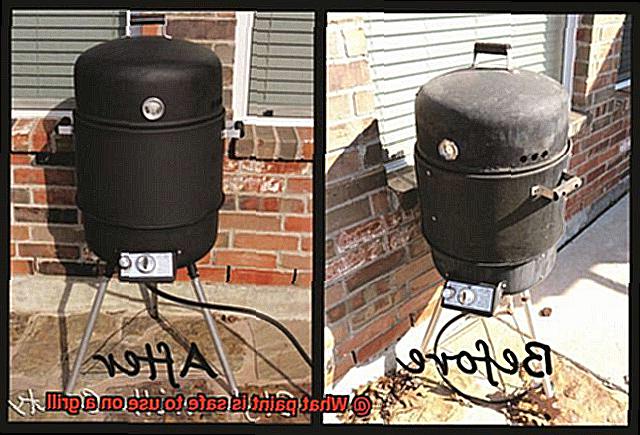
Different types of grills require different paints. For instance, if you have a cast iron or stainless steel grill, you’ll need a paint that’s specifically designed for those surfaces. Using the wrong type of paint could damage your grill and even be dangerous to your health.
Opt for Heat-Resistant Paint
Grills can get very hot, and not all paints can withstand high temperatures. To avoid peeling or blistering, choose a high-temperature paint that can handle up to 1200°F. Look for paints made from silicone resin, which is heat-resistant and won’t crack or peel over time.
Clean and Prepare the Surface
Before applying any paint, make sure your grill is clean and free of rust and debris. Use a wire brush or sandpaper to remove any loose paint or rust from the surface. Then, apply a primer specifically designed for metal surfaces. This will help the paint adhere better and last longer.
Apply the Paint Carefully
When it’s time to apply the paint, follow the manufacturer’s instructions carefully. Use brushes or rollers designed for use with high-temperature paints, and apply the paint in thin, even coats. Avoid drips and runs by taking your time and allowing each coat to dry completely before applying another.
Let It Cure
Once you’ve applied the final coat of paint, let your grill cure for at least 24 hours before using it again. Rushing this process could lead to a poorly painted surface that’s prone to damage. Once the paint has fully cured, your grill will look great and be ready for your next cookout.
Cleaning the Grill Before Painting
Perhaps it’s time to give it a fresh new look with a fresh coat of paint. But before you start painting, it’s crucial to clean and prepare the surface to ensure that the paint adheres properly and provides a long-lasting finish. As an expert on cleaning grills before painting, I’m here to help you through the process.
First, remove any detachable parts from your grill, including the grates. Use a wire brush to scrape off any loose or flaking rust or paint. For heavy rust or corrosion, consider using a power tool like an angle grinder equipped with a wire brush attachment.
Next, focus on removing any built-up grease or grime from the surface of the grill. Choose a degreaser that is safe for use on metal surfaces and won’t leave behind any residue. Apply the degreaser liberally and let it sit for a few minutes before scrubbing with a stiff brush.
Once you’ve thoroughly cleaned your grill, rinse it off with a hose or pressure washer to eliminate any remaining debris or cleaning solution. Wait until the grill has dried completely before moving on to painting.
It’s important to note that different types of grills may require special preparation before painting. If your grill is made from stainless steel, for example, you may need to treat the surface with a special primer before applying paint. Always consult the manufacturer’s instructions or do additional research to ensure that you are using the correct methods and materials for your particular type of grill.
Preparing the Area Around the Grill for Painting
Before you start painting, it’s crucial to prepare the area around the grill properly to ensure a smooth and long-lasting finish. As an expert on this topic, I’m here to guide you through the steps you need to take.
Firstly, make sure your grill is thoroughly cleaned and rust-free. Use a wire brush or sandpaper to remove any flaky or loose paint. Once your grill surface is ready, it’s time to protect the surrounding area. Cover any nearby plants, furniture, or surfaces with plastic sheeting or drop cloths. This will prevent any paint from accidentally getting on them.
Safety should be your top priority when preparing the area around your grill for painting. Wear protective gloves and a mask to avoid inhaling any paint fumes.
Choosing the right paint for your grill is also important. Not all paints are safe for use on grills, as some contain harmful chemicals that can be released when exposed to high temperatures. Look for paints specifically designed for use on grills and outdoor cooking appliances.
One great option is high-temperature paint that can withstand heat up to 1200°F. This type of paint is commonly used on the inside of grills but can also be used on the exterior. It is available in various colors and finishes such as matte, satin, and gloss.
When applying the paint, it’s essential to follow the manufacturer’s instructions carefully. Apply the paint in thin coats, allowing each coat to dry completely before applying the next one. This will help prevent drips and ensure an even finish.
In summary, preparing the area around your grill for painting is an important step in achieving a professional-looking finish. Remember these key points:
- Clean and rid your grill surface of rust before painting.
- Protect nearby plants, furniture or surfaces with plastic sheeting or drop cloths.
- Wear protective gloves and a mask to avoid inhaling any paint fumes.
- Choose the right paint for your grill, such as high-temperature paint that is safe for use on grills and outdoor cooking appliances.
- Follow the manufacturer’s instructions carefully when applying the paint in thin coats.
Also Read: Can You Paint Grill Grates?
Conclusion
In conclusion, revamping your grill with a fresh coat of paint is a smart way to keep it looking new while safeguarding it against the elements. However, not all paints are created equal when it comes to grilling. Using the wrong type of paint can introduce toxic chemicals into your food, which is why it’s essential to choose safe paint.
High-temperature paint and ceramic-based paint are two excellent options for painting a grill. High-temperature spray paint is ideal for grills that are frequently used or exposed to harsh weather conditions, while ceramic-based paint is non-toxic and can withstand extreme heat without breaking down or flaking off.
Avoid using regular spray paints or any paint containing lead, zinc, or other harmful chemicals on your grill. These substances can release noxious fumes when heated and contaminate your food. Before painting your grill, make sure you prepare the surface properly by cleaning and removing any rust. Choose heat-resistant paint that adheres well to metal surfaces, apply thin coats following the manufacturer’s instructions carefully, and let it cure for at least 24 hours before using your grill again.
To achieve a professional-looking finish, take extra precautions when painting around your grill area. Protect nearby plants, furniture or surfaces with plastic sheeting or drop cloths; wear protective gloves and a mask to avoid inhaling any paint fumes; choose the right paint for your grill; follow the manufacturer’s instructions carefully when applying the paint in thin coats.

